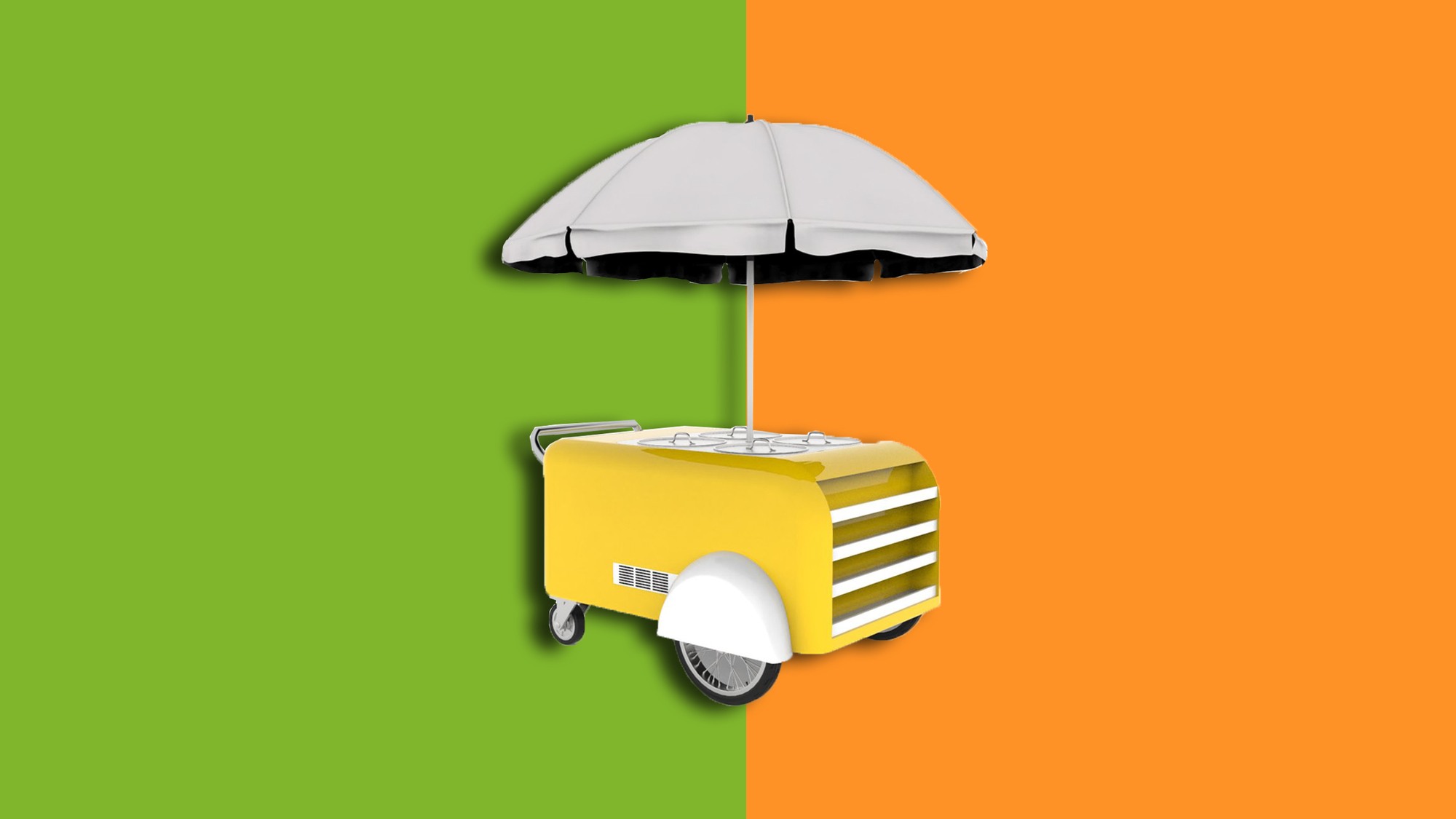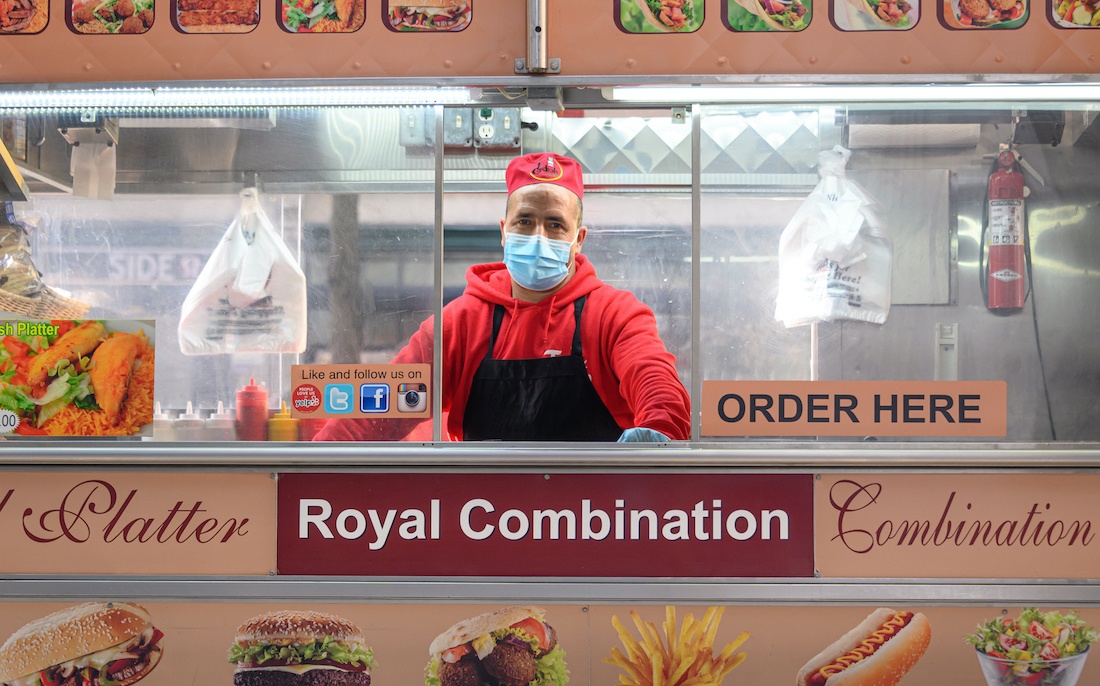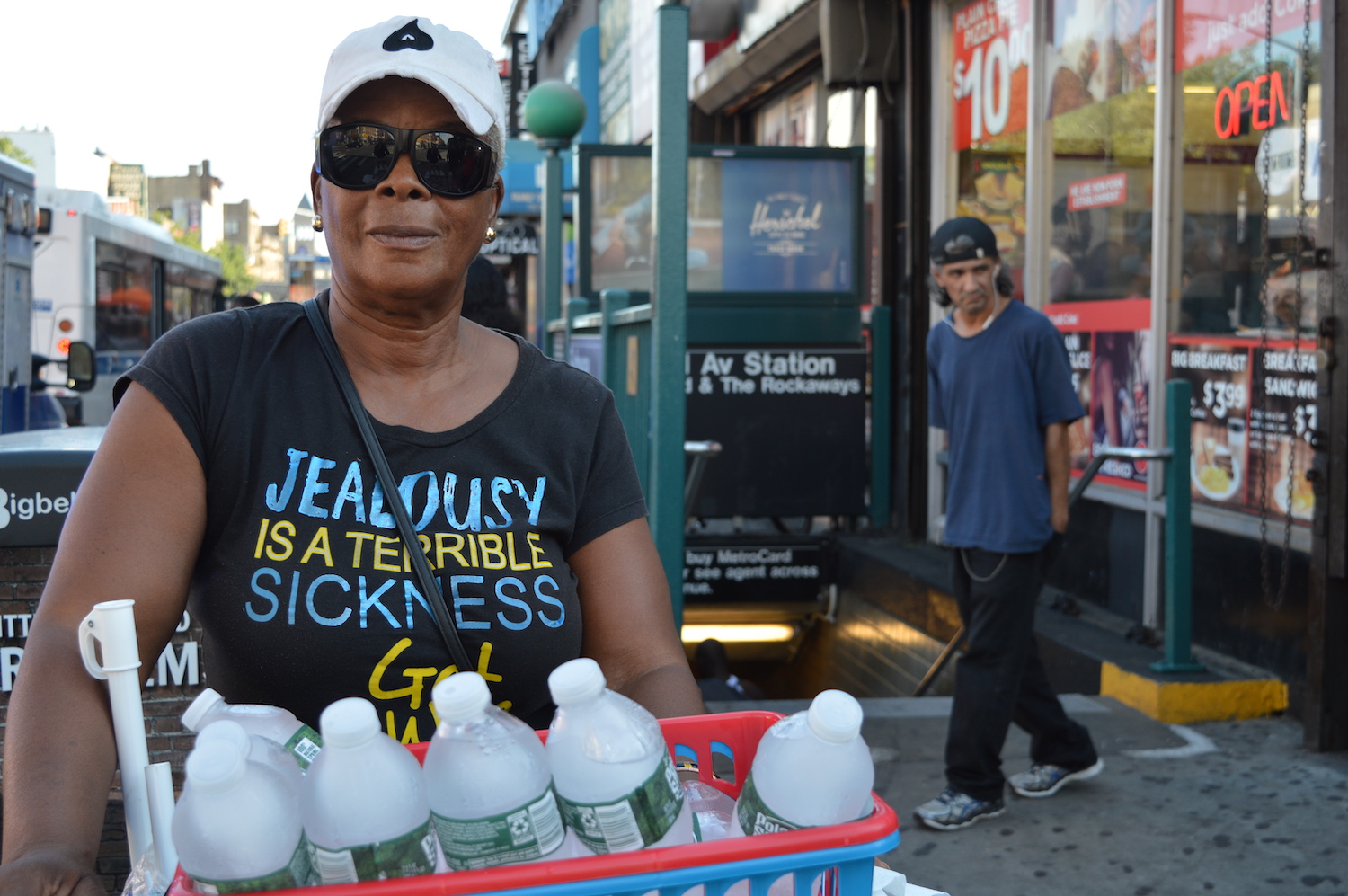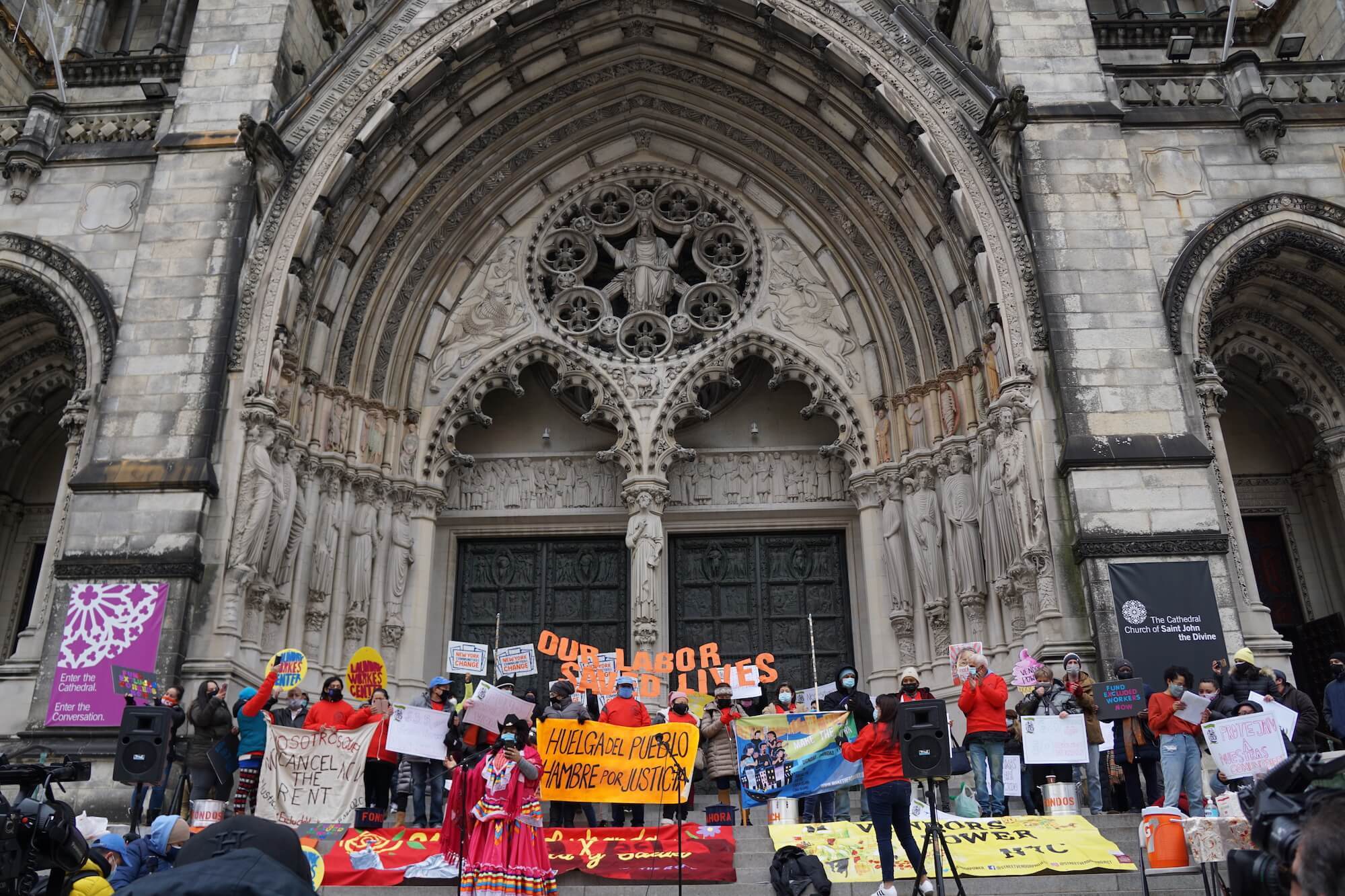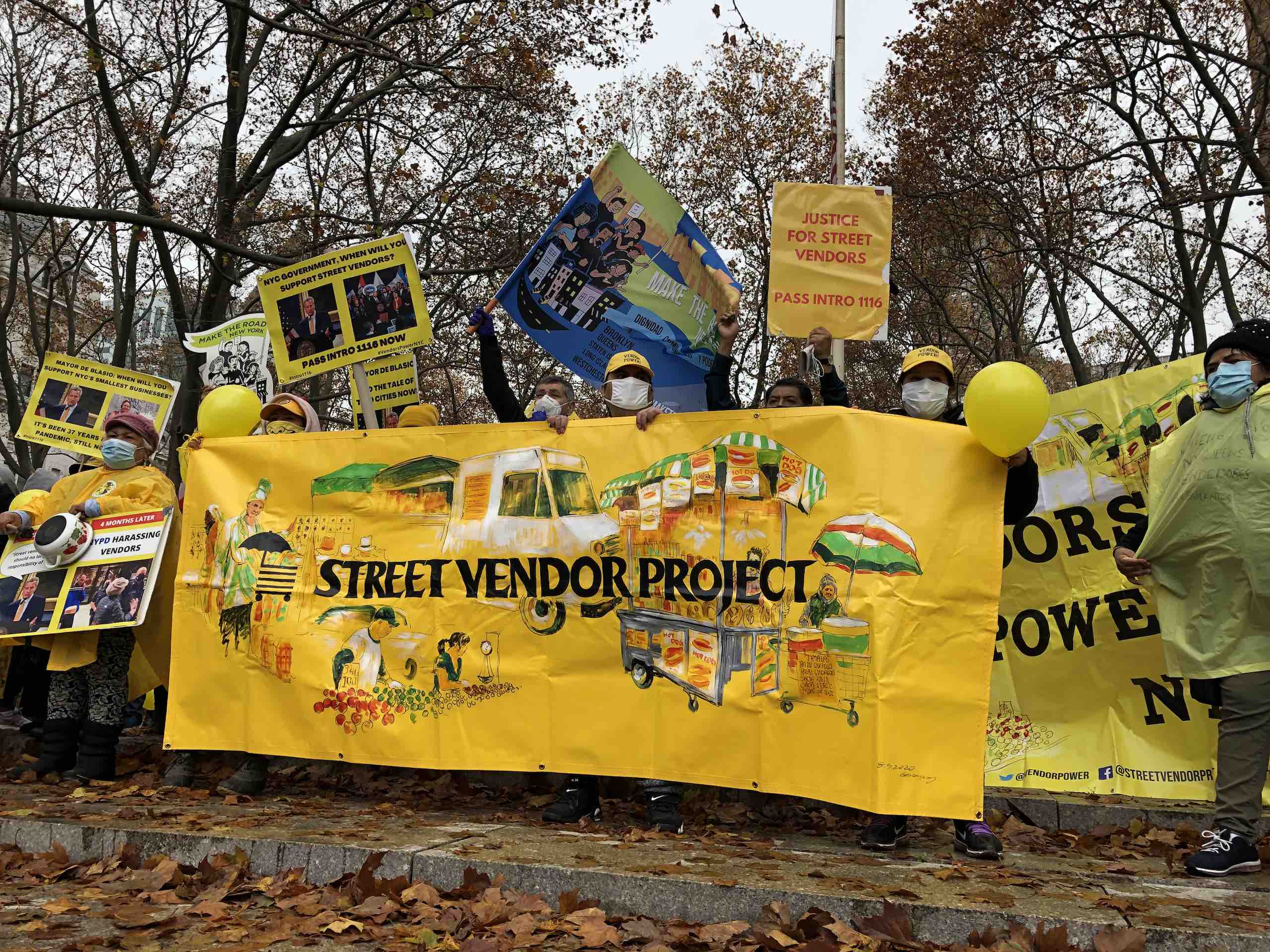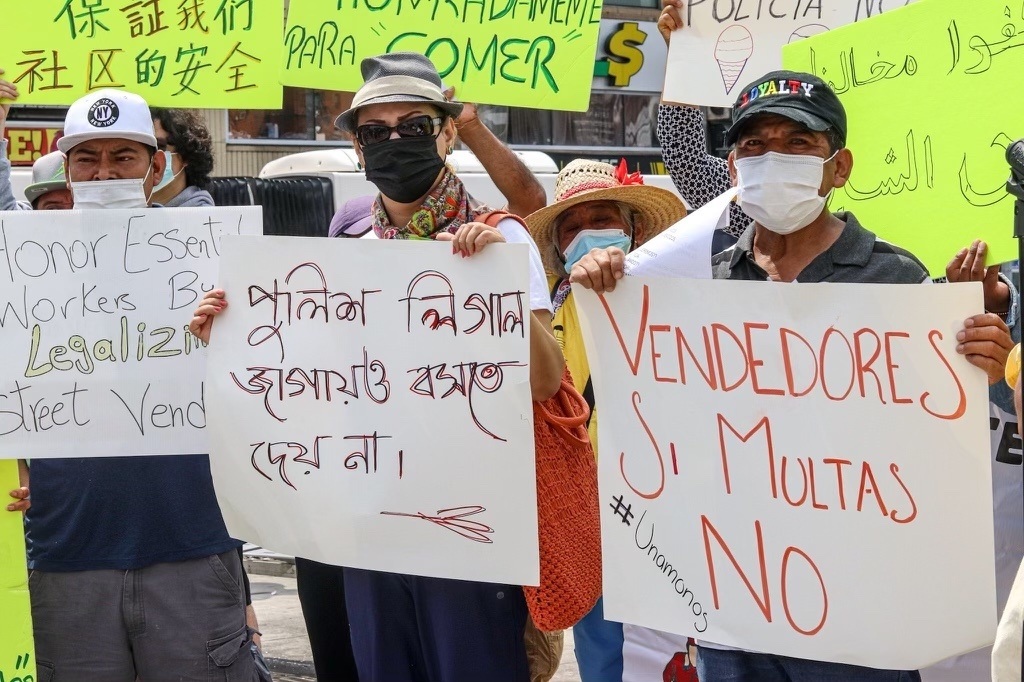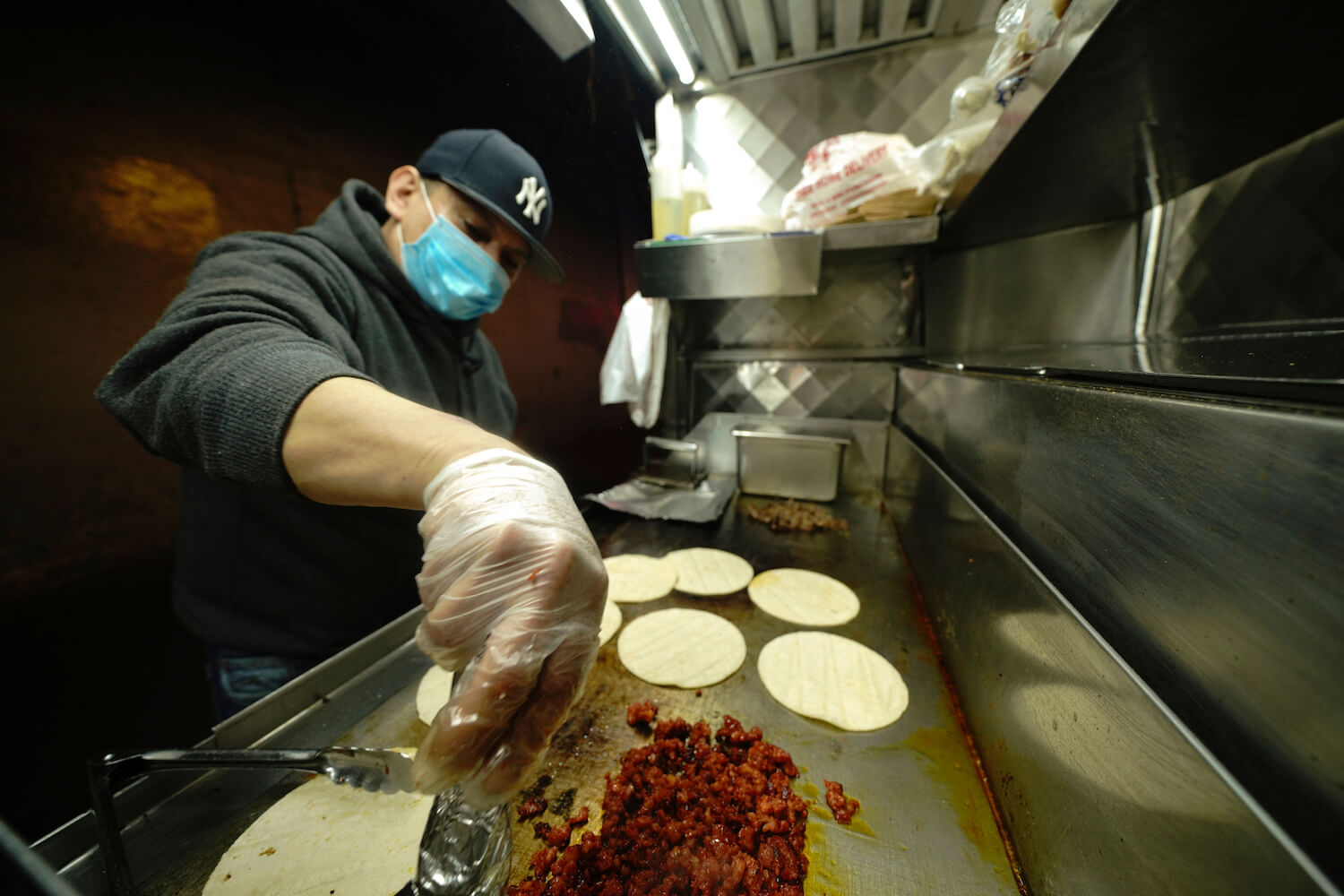The city’s sidewalk vendors have long struggled to legalize their carts. Richard Gomez’s “Tamalero” is helping to provide a solution.
Earlier this year, the Los Angeles County Department of Public Health approved the design for a lightweight, carbon-fiber-built sidewalk food vending cart called “The Tamalero.” Designed by Richard Gomez, a Los Angeles-based engineer with a background in food truck design and safety, it’s the first hot food vending cart to gain approval from the county’s health department—a move widely seen as a major bureaucratic break-through in the decade-plus-long struggle to decriminalize street vending in Los Angeles.
“California code has the strictest regulation there is, hands down,” said Gomez, who began working on the design in the spring of 2018, when vendors and advocacy groups were on the cusp of pushing through the state’s landmark Safe Sidewalk Vending Act. That law promised to bring tens of thousands of street vendors into the formal economy by creating a pathway to legal, permitted vending. But the county’s convoluted permitting process, rooted in the state’s famously onerous and outdated retail food code, has effectively shut out most food vendors from the ability to obtain permits.
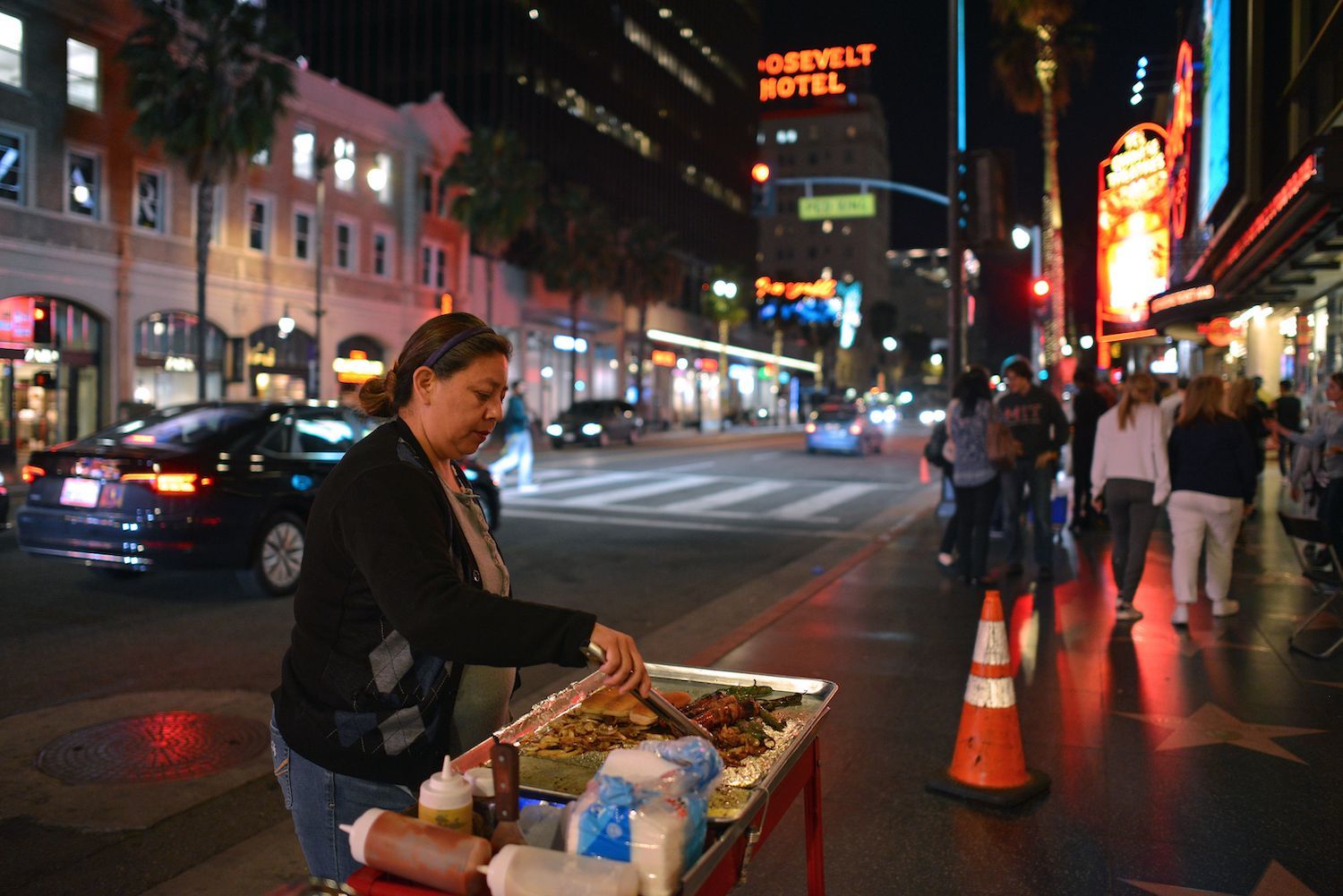
Maria Navas prepares hot dogs in front of the Dolby Theatre on the Hollywood Walk of Fame in Los Angeles. Navas, who arrived to the United States from Mexico, said “I’ve been doing this for 30 years, always cooking, always running, trying to sell and get a permit.”
AGUSTIN PAULLIER/AFP via Getty Images
According to a new report from the nonprofit law firm Public Counsel and the UCLA School of Law’s Community Economic Development Clinic, only 165 of the estimated 10,000 people currently selling food on the sidewalks of Los Angeles have obtained permits. The quasi-legal status of street vending has resulted in aggressive and sometimes violent crackdowns. Recently, the Los Angeles County Sheriff’s Department, working in conjunction with the county and city, shut down L.A.’s prominent Avenue 26 Night Market, along with other popular venues for street food vendors, without advance notice to either vendors or customers.
Currently, there are few options for vendors seeking affordable, mobile and code-compliant carts. Most professionally manufactured carts average around $15,000, because they tend to be larger and equipped with more features, such as waste units and sinks. However, even the slickest new food vending cart isn’t guaranteed to pass muster with county public health inspectors. As a result, many vendors build their own carts, which are subject to confiscation, fines and other punitive enforcement measures.
Gomez hopes his cart—priced at $7,500—will be a game changer for vendors seeking a foothold into the city’s street vending economy, which has been an important feature of modern-era Los Angeles food culture since at least the late 19th century, when tamale wagons were a fixture on the city’s streets.
Currently, there are few options for vendors seeking affordable, mobile and code-compliant carts—the rules were largely written for brick-and-mortar restaurants and large food trucks.
Getting to a final approval design was a long, arduous process, Gomez said. Revolution Carts, the five-person private design firm he founded to build and manufacture the carts, went through 15 designs before finally receiving approval in April. Navigating county guidelines and California retail food code were major design hurdles, because these were largely written for brick-and-mortar restaurants and large food trucks. A food cart built to existing code would require multiple-compartment sinks, plumbing, ventilation, refrigeration, and high-capacity food storage, among other features.
Carts built to these specifications would be too large and heavy for normal sidewalk vending, Gomez explained. Another challenge was waning political interest in helping street vendors after the 2018 elections.
Gomez, who has been designing code-compliant food trucks, trailers, and other mobile facilities for the Los Angeles engineering firm Vahe Enterprises since 2001, called in the National Food Truck Association for help. “They helped lobby [the] city council, who heard us out,” said Gomez. “But really nothing was done.”
A rendering of “The Tamalero,” the first hot food vending cart to gain approval from the Los Angeles County Department of Public Health.
(Courtesy of Richard Gomez/Revolution Carts)
Gomez recalled a series of meetings between vendors and officials from the Bureau of Street Services, the division charged with overseeing sidewalk vending in L.A., where officials insisted on unworkable restrictions and dimensions on the size and placement of carts. “It has to be 11 inches from the side of the border of the sidewalk. It has to be four feet away from the wall or gate of the sidewalk,” Gomez said, recalling the numerous requirements detailed in these meetings. “A medium sidewalk is only about two to three feet of space. At that point, I was like, ‘Okay, you can’t build anything that’s going to be two by three feet and still be able to do all this cooking.’”
Gomez interviewed dozens of street vendors in the early stages of design to create an inventory of needs. He initially hoped to design a grill cart to help vendors sell quintessential L.A. street foods and snacks such as bacon-wrapped hot dogs and esquites. He settled on a tamale cart because it was the most feasible and realistic option; tamales are classified as “prepackaged foods” in the state’s food code, and thus subject to less stringent regulation.
This experience gave him a firsthand look into how sidewalk vending is an economic lifeline for individuals and families—playing a critical role in providing fresh, culturally relevant foods in communities without easy access to them.
The Tamalero measures only about four feet long by 2.5 feet in height and features a glossy painted exterior, mounted umbrella and four built-in steam buckets designed to keep up to 28 dozen tamales piping-hot at one time. Vendors have the option to customize the finish and umbrella. It took crucial design concessions from the county public health department to get final approval—originally, officials insisted on a built-in microwave, among other features, Gomez said.
Gomez and his family came to Los Angeles from Mexico when he was nine years old, settling in the area of Watts. He grew up helping his aunt and other family members sell fresh fruit at local parks and factories. This experience gave him a firsthand look into how sidewalk vending is an economic lifeline for individuals and families, playing a critical role in providing fresh, culturally relevant foods in communities without easy access to them.
Many street vendors are recently arrived immigrants, women, and the elderly—among the most economically and politically vulnerable groups in the city; the average vendor only earns about $15,000 a year. For many, it is a second job to help make ends meet.
“I want people to be very proud when they’re walking the streets with it, selling. When you give people an opportunity to start something and legitimize their business, that is when the market flourishes.”
Gomez likes to remind people that some of Southern California’s most iconic food businesses were started by entrepreneurially-minded workers with little capital, infrastructure, or political clout. King Taco, one of L.A.’s most recognizable and beloved Mexican fast-food restaurants, was founded in 1974 by Raúl and Lupe Martínez, who sold tacos out of a converted ice cream truck outside a bar in East Los Angeles. Today there are more than 20 King Taco locations in the city. And the famed burger empire In-N-Out, now synonymous with Southern California fast-food culture, started out as a modest food stand in Baldwin Park.
Gomez also remembers when food trucks were popularly known as “roach coaches” before gaining wider acceptance by municipal governments and diners. Today, they are Zagat-rated mobile restaurants celebrated on Food Network and truck-centric food festivals.
So far, interest in The Tamalero has been extremely high—the initial 28-unit production run is already sold out. “I know people want it out already. But at the same time, I want it to be perfect,” Gomez said. “I want people to be very proud when they’re walking the streets with it, selling. When you give people an opportunity to start something and legitimize their business, that is when the market flourishes.”
